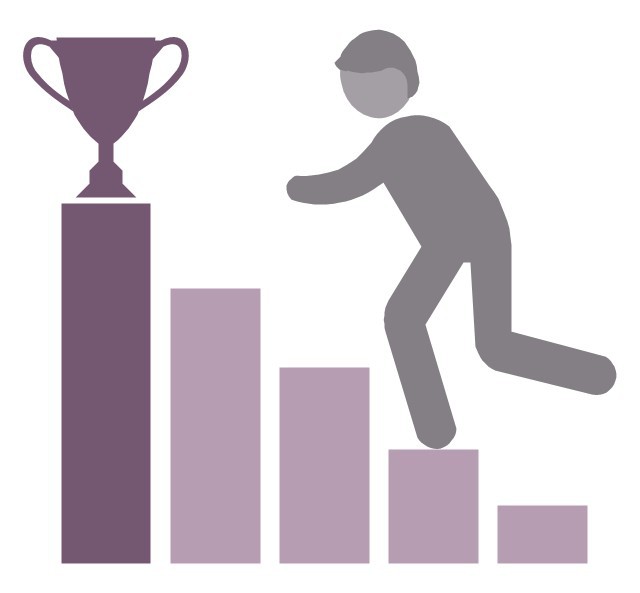In this article, we will examine how motivation differs from stimulation. For the purpose of functioning of business entities in a market economy, it is necessary to strengthen the phenomena under consideration.
The concept of staff motivation and incentive
Motivation is a changing system of internal factors that interact with each other in order to direct human behavior to achieve the goal set for the business entity.
In addition, in the process of its implementation, the employee must achieve his own goals and realize his interests.
As already mentioned above, motivation is an internal process that is directly related to needs.

That which acts on a person from the outside and represents a certain value for him is called a stimulus. Thus, in the formation of the motive of labor, the good becomes the last.
The stimulation of labor contributes to the creation of conditions under which the activities of the employee contributes to more efficient and productive work. That is, it leads the latter to the fact that you can work with greater efficiency, which contributes to the emergence of motivation for this in the labor process.
This is the preliminary answer to the question of how motivation differs from stimulation. What else do you need to know? About it further.
Motivation Methods
The direct managers and top management of the company can motivate employees in three ways: by coercion, an agreement on the increased payment of quality work and the creation of conditions conducive to self-motivation of employees.
In general quality management, the third method is given the highest priority.
Self-motivation is the development of the desires and internal aspirations of employees for certain types of activities. This can be achieved if the organization has created the conditions that can give its employees a positive impression of the work done.
In our country, in commercial structures, a method of coercion based on fines, dismissals, and other negative phenomena is quite common. TQM technology has a negative attitude towards them. However, in some cases they cannot be dispensed with, but they must indicate boundaries beyond which it is impossible to cross.

The methods of motivation include remuneration, which can be in tangible or intangible forms.
In addition, it is necessary to create an appropriate microclimate in institutions, to educate, train employees, and where necessary, and to convince the goals of employees to be as close as possible to those of the organization.
In the case of influencing the goals of the organization, the employees have a feeling of complicity in the activities of the business entity. At the same time, delegation of authority is carried out to those levels for which they are necessary, which contributes to the understanding of the goals of the organization by a large number of employees.
Types of Incentives

We continue to consider the question “How is motivation different from stimulation?” By considering the types of the latter.
Basically, they are distinguished by three:
- material and monetary, in which, in addition to the stimulating function, status and reproduction are also performed;
- material and social - here the stimulus continues to remain so until the good continues to fulfill its role, after it becomes received, the stimulus goes into the category of motive;
- moral-psychological - there is an emphasis on a person as a person; it is impossible to directly influence the employee with this type.
Intangible motivation
There are two main forms of the phenomenon under consideration - material and intangible. Motivation and stimulation of personnel activities should be aimed at motivating employees in the results of their work, which contribute to the achievement of the goals of the business entity, which should be achieved by a simultaneous combination of these two forms.
Most workers are interested in high wages. But at the same time, one cannot ignore those for whom the use of methods of intangible motivation of personnel is required.
The latter is understood as the system of creating internal motives for employees that are not related to material incentives that contribute to increasing productivity and labor efficiency.
The non-material motivation of personnel should cover all employees, be comparable with the goals of the organization, be updated - new methods should replace the old ones. In this case, it is necessary to take into account the needs of workers in accordance with the A. Maslow pyramid: physiological, in safety, respect, self-expression, social.

There are a lot of methods of non-material motivation. Here are some of them:
- praise;
- address by name;
- extra rest for outstanding achievements;
- commemorative awards;
- career growth;
- objectives and evaluation criteria should be clear;
- each employee should be able to express an opinion that should be heard;
- direct contact of top management with employees;
- Hall of Fame;
- Unusual job title
- gratitude to employees from management in a public manner;
- motivational board;
- providing greater freedom within reasonable limits while retaining control functions;
- holiday greetings;
- assistance in solving personal and family problems, etc.
Material incentive system
Its main component is the wage system, which is carried out in the form of time or piecework. Time-based payments are mainly common in state institutions, in which it is determined by the amount of time worked by the employee, taking into account his qualifications and working conditions. In case of piecework, payment is made depending on the results achieved.

In addition, material incentives include irregular additional payments, bonuses, bonuses, various percentages, allowances and surcharges.
Most of the employees are focused on these incentive methods. However, as already noted, when the good is achieved, it ceases to be an incentive, so it is necessary to combine the methods of material and non-material stimulation and motivation.
Finally
In this article, we found out how motivation differs from stimulation. The main difference is that the first is aimed at the internal, and the second - at the external needs of the employee. Both those and others are called upon to ensure that the interests of the organization’s employees are taken into account in order to achieve the organization’s goals with their help. Unlike motives, incentives continue to remain so until the good is achieved, after which they become “hygienic factors” (motives).